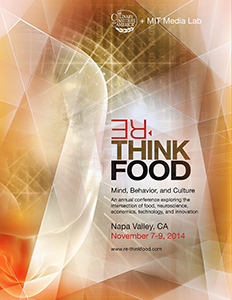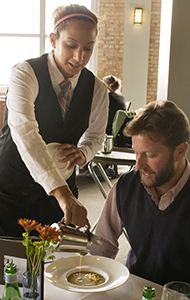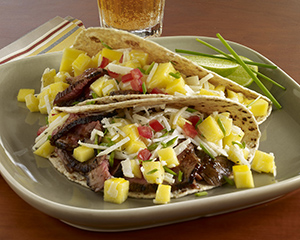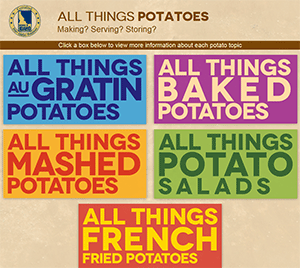CIA and MIT Media Lab Collaborate on New Conference Series on Rethinking Food
 Every dish we cook, every meal we eat represents the convergence of head, heart and hands. reThink Food: Mind, Behavior, and Culture, is a new conference series co-presented by The Culinary Institute of America (CIA) and the MIT Media Lab to explore how we experience food—from the workings of our sensory systems, to the impact of new technologies on our food systems, to the habits and rituals that bind us.
Every dish we cook, every meal we eat represents the convergence of head, heart and hands. reThink Food: Mind, Behavior, and Culture, is a new conference series co-presented by The Culinary Institute of America (CIA) and the MIT Media Lab to explore how we experience food—from the workings of our sensory systems, to the impact of new technologies on our food systems, to the habits and rituals that bind us.
In its first year, reThink Food will bring an audience of 300 from the science, marketing, technology, food and media industries to the CIA’s Napa Valley campus, November 7-9, 2014. The three-day program will include research presentations, panel discussions, tastings, culinary demonstrations and a variety of sensory experiences led by world-class experts who include behavioral economists Dan Ariely (Duke University) and Michael Norton (Harvard University), scientists Stuart Firestein (Columbia University) and Howard Shapiro (Mars, Inc.), chefs Christopher Kostow (The Restaurant at Meadowood), Daniel Patterson (The Daniel Patterson Restaurant Group), and Maxime Bilet (Art for Food), Pulitzer Prize winner Michael Moss (The New York Times), inventor and author Nathan Myhrvold (Intellectual Ventures), along with CIA President Tim Ryan, CMC, and MIT Media Lab Director Joi Ito.

 Are you branding your program, public foodservice outlets and catering services effectively? Start with a great logo, which informs branding and drives business.
Are you branding your program, public foodservice outlets and catering services effectively? Start with a great logo, which informs branding and drives business. Americans are said to live and operate in an “experience” economy. But a new way of creating value via loyalty rather than premium price is beginning to emerge. What does this mean to our students and their future careers in foodservice? Part one of a two-part focus.
Americans are said to live and operate in an “experience” economy. But a new way of creating value via loyalty rather than premium price is beginning to emerge. What does this mean to our students and their future careers in foodservice? Part one of a two-part focus. The Global Culinary Innovators Association and International Food and Beverage Technology Association announced their respective formations at the industry’s largest trade show last month.
The Global Culinary Innovators Association and International Food and Beverage Technology Association announced their respective formations at the industry’s largest trade show last month. Research and trend predictions point in the same direction: Use more fresh mango on menus.
Research and trend predictions point in the same direction: Use more fresh mango on menus. Whether you maintain one or 21, building the practice of keeping a journal and recording key ideas and activities can very useful for three important reasons.
Whether you maintain one or 21, building the practice of keeping a journal and recording key ideas and activities can very useful for three important reasons. Are you dooming your students to failure by not focusing enough attention on helping them find and keep jobs after graduation?
Are you dooming your students to failure by not focusing enough attention on helping them find and keep jobs after graduation? There should be no room for variance from a standard of expectation among all stakeholders—employers, faculty, parents and the students themselves. To ensure that culinary grads meet acceptable skill and aptitude standards, Chef Sorgule suggests employing a “passport.”
There should be no room for variance from a standard of expectation among all stakeholders—employers, faculty, parents and the students themselves. To ensure that culinary grads meet acceptable skill and aptitude standards, Chef Sorgule suggests employing a “passport.” Potato prep problems? Your students are one click away from the solution. Questions about au gratin, baked, mashed, potato salad and french fries are answered online.
Potato prep problems? Your students are one click away from the solution. Questions about au gratin, baked, mashed, potato salad and french fries are answered online.